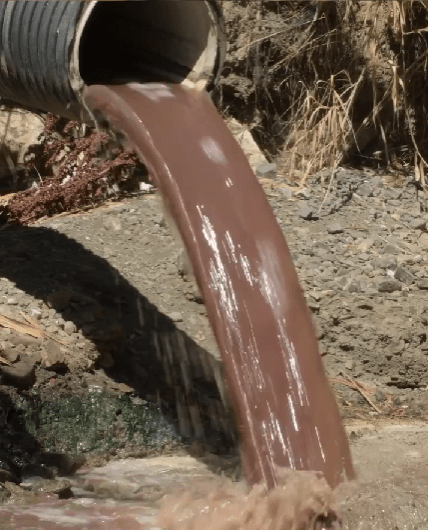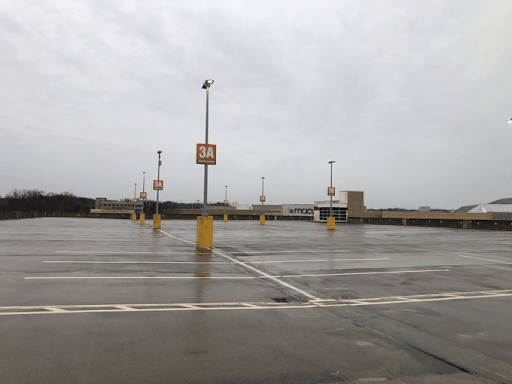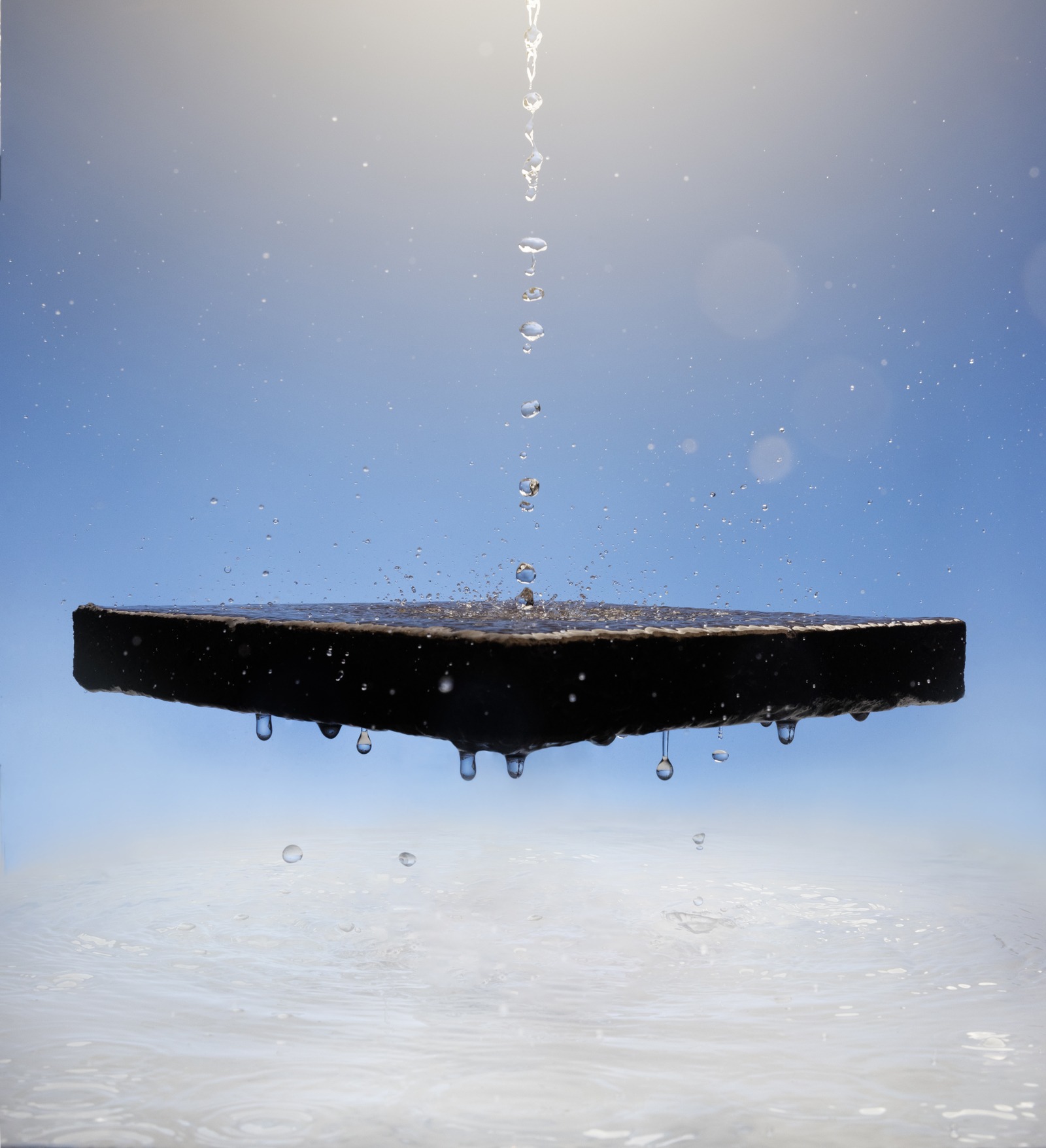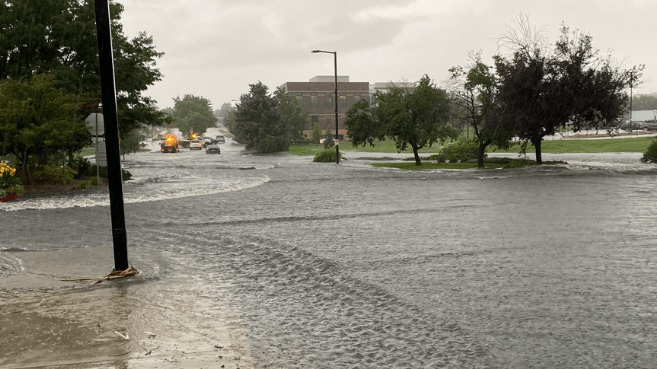While so-called climate experts wring their hands about fossil fuel vs. EV powered vehicles, it turns out that the biggest climate threat from vehicles comes from their tires.
According to a recent report, 78% percent of the microplastics in oceans come from synthetic tire rubber, all by way of stormwater runoff. Those microplastics end up in marine life, and ultimately end up in the seafood that humans consume.
Tire rubber contains more than 400 chemicals and compounds, many of them carcinogenic, and research is only beginning to show how widespread the problems from tire dust may be.

“Tire wear particles” are emitted continually as vehicles travel and they range in size from visible pieces of rubber or plastic to microparticles. It is estimated that tires generate 6 million tons of particles a year, of which 200,000 tons end up in oceans.
The silver lining is that scientists studying the pollutants in stormwater runoff have found that green infrastructure solutions such as rain gardens could prevent more than 90 percent of tire particulates from entering our waterways.

AquiPor’s technology is being developed to accomplish the same thing, but at a much larger scale, by capturing and filtering runoff through our permeable system right within the urban landscape.
As we begin our water quality and filtration testing of our permeable concrete, we’ll keep you close to these developments!
The U.S. Geological Survey recently put together a model that estimated the amount of impervious parking lot coverage in the United States.
According to the report, 5.5% of all developed land in the lower 48 is covered by parking lots. That’s close to 26 billion square feet of surface area that is impervious to stormwater. All of this impervious surface area contributes to stormwater pollution and localized flooding when it rains.
With U.S. cities responsible for discharging up to 10 Trillion gallons of polluted water into clean waterways and flood damage costing the country $9 billion annually, parking lots represent an obvious opportunity for implementing green stormwater infrastructure.

By my very rough math, parking lots are responsible for tens of billions of gallons of stormwater runoff annually. That represents runoff that not only needs to be treated, but it’s also water that never makes its way back into the ground to recharge groundwater. In drought-plagued regions like the southwest and California, groundwater recharge is one of the most critical water management strategies that can be implemented.

One easy solution to this problem is to make parking lots surface-permeable. The right permeable pavement technology, when it’s accompanied with good engineering, is a no-brainer approach to stormwater management and groundwater recharge.
Besides the environmental benefits, the economic benefits of permeable pavements are understated. Getting stormwater back into the ground naturally is extremely valuable. Simply put, every gallon of freshwater that doesn’t need to be treated at a downstream wastewater treatment plant or imported from hundreds of miles away, represents real savings for a community.
In a previous post we addressed why we don’t yet see permeable pavement everywhere. At AquiPor, we’re working to change that with a technology that makes permeable paving the norm and not the exception in cities. The parking lot seems like a good place to start this trend.
At AquiPor, we believe that climate change is mostly a water issue. One of the most significant impacts of a warming atmosphere is the effect that it’s having on precipitation. The amount of water that a region gets and when it gets that water has become more and more unpredictable. This can mean too much water (flooding) in some regions, and not nearly enough (drought) in others. And even in drought-stricken areas, when precipitation does come, it can be volatile and sudden.
Extreme rain events, outdated infrastructure, and the vast amount of impervious surfaces in our cities all factor into the alarming levels of runoff pollution and urban flooding that communities now have to contend with.
At AquiPor, we’ve developed our permeable concrete technology to take the place of traditional paved surfaces to help manage stormwater, reduce pollution from runoff, and help mitigate flooding in cities and towns alike. Here are five ways that AquiPor can help make our communities more resilient to climate change:
- AquiPor’s permeable concrete manages stormwater right where it falls by allowing rain to flow through the material and naturally soak back into the ground. Instead of relying on inadequate gray infrastructure (underground pipes, tanks, and conveyance systems), which gets overwhelmed in big rain events, AquiPor captures and filters stormwater where it falls, getting precious rainfall back into the ground naturally. This is especially important for regions experiencing historic drought such as in California, where record amounts of precipitation were wasted due to inadequate infrastructure.
2. AquiPor makes it easier for cities to deal with water pollution. It’s estimated that over 10 TRILLION GALLONS of untreated stormwater, wastewater, and sewage gets discharged into clean water bodies every year. This is due to the vast amount of impervious concrete and asphalt surfaces in cities, the amount of runoff these surfaces generate, and the outdated nature of gray infrastructure systems that are ill-equipped to deal with large volumes of runoff.
When it rains, stormwater that should naturally soak into soils and recharge groundwater instead becomes polluted runoff as soon as it hits the pavement. Much of this polluted runoff ends up in nearby water bodies.
By replacing traditional pavements with AquiPor’s permeable concrete, stormwater can now flow through the concrete and back into the ground. Due to the tiny pore size of AquiPor concrete, it can even filter out the majority of dirt, debris, and pollutants found in stormwater.

3. AquiPor’s product has an inherently low CO2 footprint. Cement and concrete production is responsible for 8% of the world’s CO2 emissions each year. In addition to AquiPor’s ability to manage stormwater and mitigate flooding, our concrete is produced in an entirely new way and does not use normal cement in the process. Instead, we use a combination of industrial minerals and without the need for cement plants, our process has an extremely low CO2 footprint when compared to normal concrete.
4. AquiPor uses recycled materials. Instead of relying on pollutive cements and additives, our concrete uses a proprietary mix of industrial minerals and “leftovers” from other industries.
5. AquiPor’s concrete is precast, making it easy and efficient to install. Precast concrete has a myriad of advantages, including uniformity, saving time, and improved quality control. Precast concrete is manufactured offsite in a covered environment which means it isn’t weather dependent, and it enables just in time delivery for jobs. It also allows for a cleaner, safer construction site.

These are just a few of the ways that AquiPor’s permeable concrete technology can make communities more resilient in the face of climate change. Where can this technology make the biggest impact in your community?

